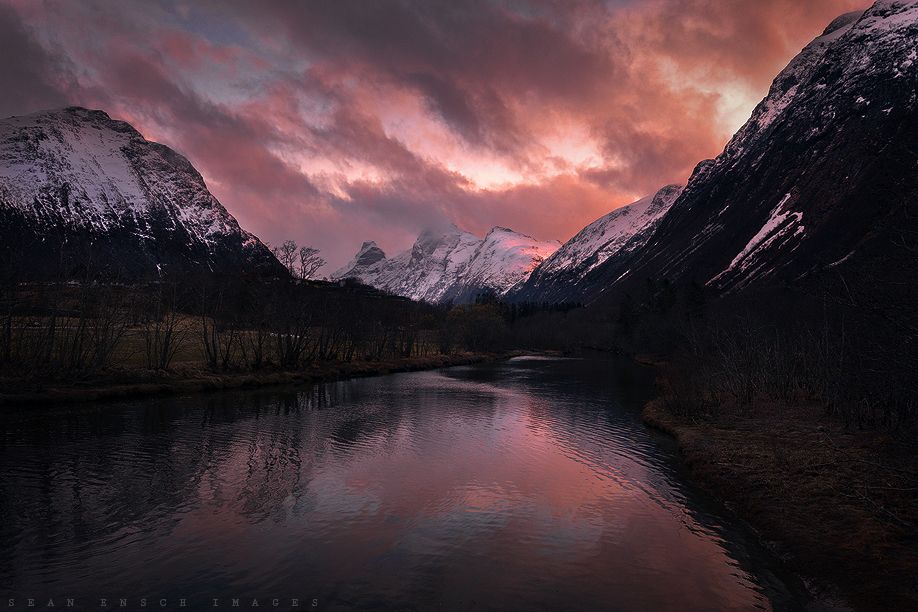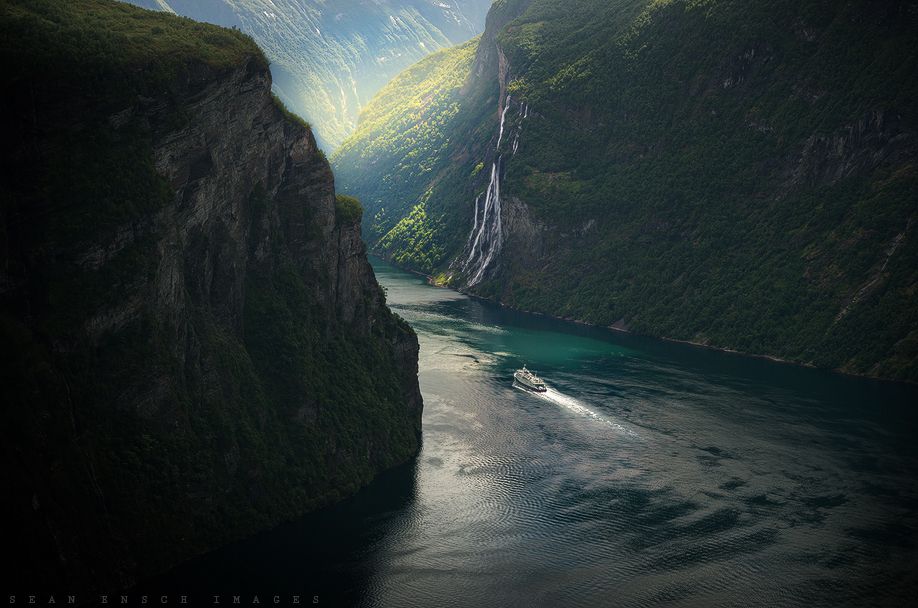Norway is a special place for photographers. The landscape of the country is unique and beautiful, it’s wide open and wild, and you can roam freely without any hassle. This makes Norway an adventurous photographer’s heaven. Although I am originally from California, I spent the last year living in the rural towns of Norway’s west coast. In this article I will share my experiences with exploring and photographing Norway, along with useful information and tips to making your very own photo journey to Norway.
First thing you need to know about Norway is weather preparedness. The crazy weather is what gives Norway it’s look and mood, but it can be harsh and trying to a person out in the wilderness. Even in the drier, warmer months of summer Norway can still catch you off guard. May and June are the months for best chances with warm, dry weather so we will focus on those. Even in May it is not uncommon for snowfall to come to the mountains. Rain is common year round, so make sure you have appropriate rain gear as well, for your camera and yourself. Now that we have that covered, let’s see some of the special characteristics Norway has to offer.
Mountains, valleys, rivers, and fjords! This is an eight shot panorama taken over the valley outside the town Andalsnes during the end of April. You can see the snow flurries over the mountains with blue sky beyond. The weather shifted like this about every hour between snow, hail, and sunshine. This image was taken with my Canon 6D and a Rokinon 14mm f2.8 lens and I used Adobe Photoshop to stitch together the eight vertical frames.
Driving through Norway you can encounter some wild mountain roads that provide expansive, beautiful views with great elements. This one is called Trollstigen, outside the town of Andalsnes. This road winds it’s way up with eleven switchback turns at a 10% grade, starting just above sea level and reaching the top at elevation of 2,800ft (850m). A wide angle lens is needed to catch it all in frame. For this image I used my Canon 6D with a 17-40mm Canon ef lens just after sunset.
Another great thing that makes Norway so great for photographing is in the summer months the days are very long with the sun does not set until midnight. It creates a longer golden hour and maintains a late dusk light all through the night until the sun rises again very early AM having never gone very low below the horizon. This provides so much extra time to shoot at sunset, rest up for a few hours, and repeat at sunrise if you can handle the lack of sleep!
On the other side, during winter you have the dark period. In western Norway the sun will rise around 11:30am, hang low on the horizon for a few hours creating beautiful soft light, then it sets around 3pm. The light often has pastels, blues, and magentas bouncing off the snowy landscapes.
The other advantage to coming to Norway in winter is the Aurora Borealis, or Northern Lights. It is best to be as close to the Arctic Circle as possible to see them clearly. To quickly describe how they are created, the lights are from solar storms when the particles hitting the Earth’s atmosphere. It excites the particles making photons, light. They can be very tricky to shoot. It is a waiting game, then scrambling to get in position before they fade out or move. To shoot the Aurora you need to have a tripod, a fast lens with the lower the aperture the better (f4 or less), and as wide a lens you can (12-20mm). Since the Aurora “dances”, it moves quicker than one would think, so a shutter speed of 10 seconds or less is needed to catch them without much blurring of the movement.
High in the mountains you can find thawing lakes during spring and summer, providing excellent color palettes to snowy mountains and skies. A good polarizer is a must when shooting in the white snow with a sun still in the sky.
One of my favorite birds to shoot is the Puffin. These birds have so much personality and are adorable looking. Norway is a great place to come shoot the Puffins because it has an entire island as a dedicated bird sanctuary, Runde. The Puffins come in late April or early May to begin nesting, then leaving at the end of summer. They nest among the cliffs of the island, flying back and forth between the sea and the nest to feed their babies. In order to shoot the puffins successfully you need a good telephoto lens with a quick focus. The birds fly quite quickly and disappear in their nests as soon as they land, giving little time to set up a shot. Later in the season, you can sit along the cliffs in to the late evening and they sometimes will rest on the rocks after their long day of work.
One of the best things to photograph in Norway are the beautiful fjords winding their way through the mountains. In order to shoot them you need to be up on one of the steeper mountains over the water to get an aerial view of the fjord. There are many great locations to shoot the fjords, with Geiranger being one of the most popular. Geiranger is in western Norway and has a mountain road you can drive to the top for an expansive view of the towering cliffs of the mountains over the fjord.
With so many amazing views, it’s easy to forget to put focus on some of the amazing mountain peaks that surround the scenery like this one, Trollveggen (The Troll Wall). Be sure to bring a zoom lens in your kit to capture some of these more intimate scenes. This image was taken at 200mm from a ridge that directly faces Trollveggen.
I hope this small sample will inspire some to get up and go have their own photographic adventure in Norway, the ultimate photo adventure!
Sean Ensch
Sean Ensch is an travel, landscape, and underwater photographer from California, currently spending a year living in Norway.
seanenschimages.com
facebook.com/seanenschimages
instagram.com/sean_ensch_images
500px.com/sean_ensch_images










